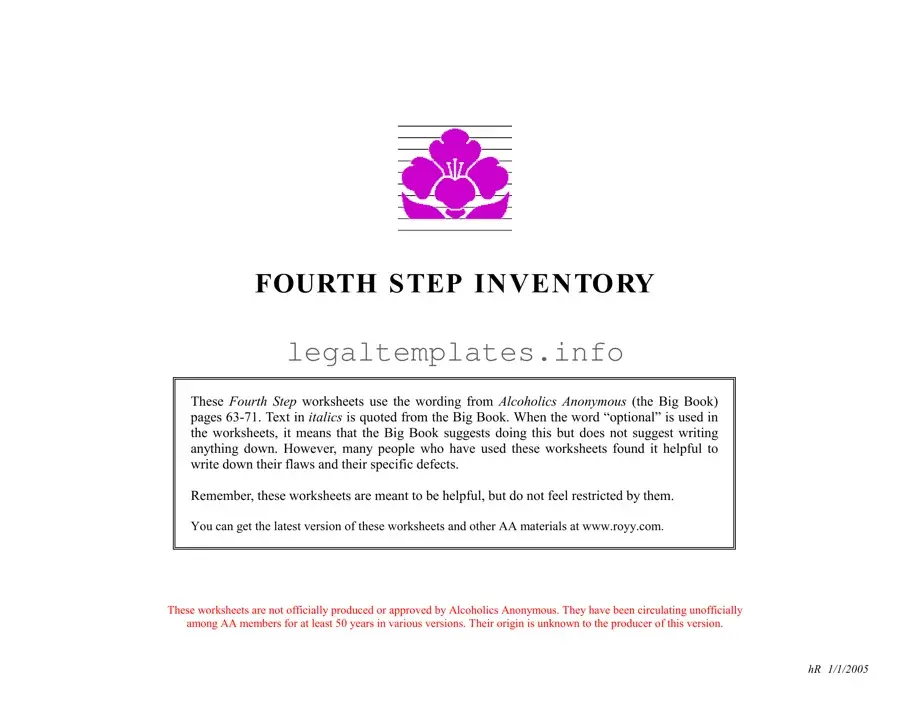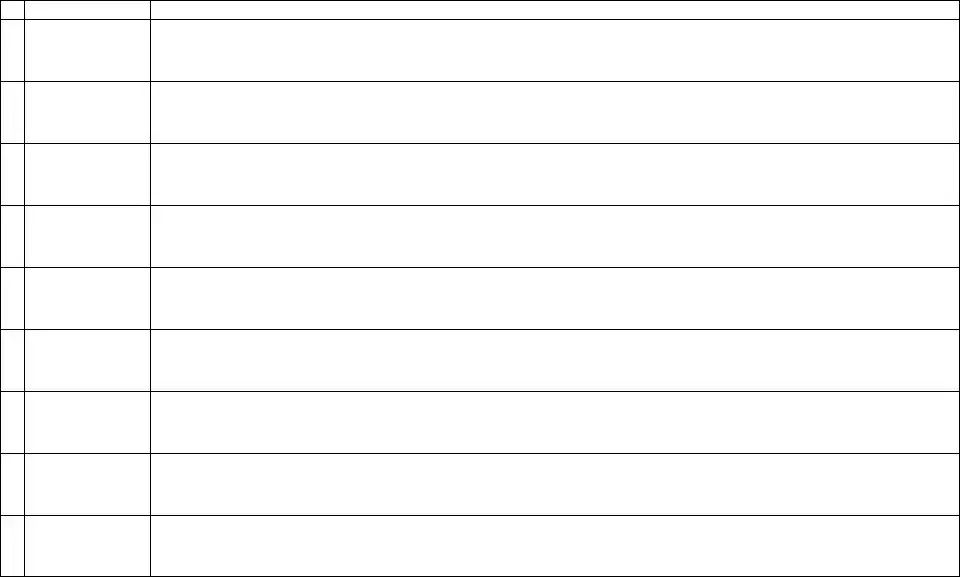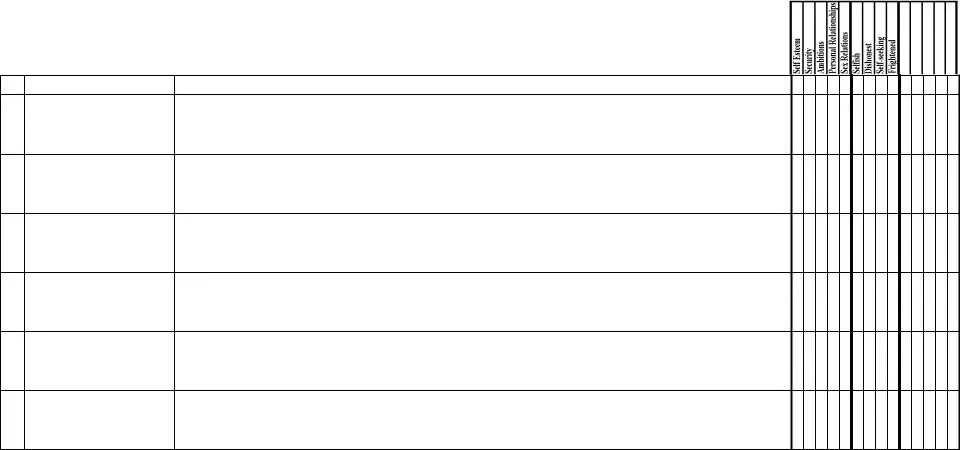What is the Fourth Step Inventory form?
The Fourth Step Inventory form is a tool used by individuals working through the 12 Steps in Alcoholics Anonymous (AA) and similar programs. It guides them in making a searching and fearless moral inventory of themselves, as suggested in AA's Big Book, specifically pages 63-71. The form includes a checklist of character defects and assets, alongside a section for individuals to write down examples of how specific flaws manifest in their lives. While not officially produced or approved by AA, versions of this form have circulated among AA members for decades to assist in their recovery journey.
Why is it important to do the Fourth Step Inventory?
Doing the Fourth Step Inventory is crucial because it involves a deep, honest reflection on one's character defects and strengths. This process is about identifying behaviors, attitudes, and habits that have been harmful to oneself and others. By recognizing these patterns, individuals can begin to address and change them, which is essential for personal growth and rehabilitation in recovery. It is a step towards understanding one's moral code and how one's actions align with it, facilitating accountability and laying a foundation for making amends in subsequent steps.
How should one prepare for completing the Fourth Step Inventory?
Before starting the Fourth Step Inventory, it's advised to read pages 63-71 in the Big Book and the corresponding section in the Twelve Steps and Twelve Traditions book. This preparation ensures a thorough understanding of what the Fourth Step entails and sets a reflective mindset for the task. Additionally, it's essential to approach the inventory with honesty and fairness to oneself, acknowledging strengths as well as defects. The objective is not self-punishment but rather self-awareness and growth.
Is it necessary to write down every thought and flaw in the Fourth Step Inventory?
While the Big Book suggests a forthright moral inventory, it does not explicitly require writing everything down. However, many find that writing helps to concretely identify and acknowledge their defects and strengths. The key is not to overwhelm oneself by attempting to list every single flaw or thought but to focus on those that have been most problematic or evident. Checking off many flaws is less important than understanding and prioritizing the ones that significantly impact one's life and relationships.
What should one do if they find themselves listing too many flaws?
If you find yourself listing an overwhelming number of flaws, it's essential to pause and shift focus towards balance. The guidance suggests listing at least twice as many assets as flaws to avoid beating yourself up. Prioritizing the flaws that cause the most trouble in your life can also help streamline the list. Remember, the goal is constructive self-evaluation, not self-deprecation.
Are the character defects listed immediately removed after completing the Fourth Step Inventory?
No, the character defects identified in the Fourth Step Inventory are not automatically removed upon completion of this step. The process of addressing and removing these defects is ongoing and primarily tackled in the 6th, 7th, and 10th Steps. Completing the Fourth Step is about recognition and readiness to change; the actual transformation requires continued effort and application of the principles learned in later steps.
Can the Fourth Step Inventory change over time?
Yes, the Fourth Step Inventory can and often does change over time. As individuals grow and evolve in their recovery, their understanding of themselves deepens, and their moral and ethical perceptions may shift. This evolving perspective can lead to new insights into character defects and strengths, which may necessitate revisiting and revising the inventory. Recovery is a process of continual personal development, and what one finds critical at one stage may differ as they progress.







